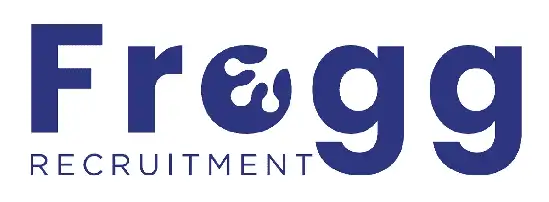Overcoming “Unconscious Bias” in Employing.
Overcoming “Unconscious Bias” in Employing.
Always aim to select the ideal individual for the position. Your choice to hire a candidate is based on their suitability for the position. Or at least, you think you are doing that. You sincerely think that your choice is the outcome of a deliberative process. And that’s entirely typical. Humans, however, are unaware that their choices are frequently skewed in some way. Overcoming “Unconscious Bias” in Employing is easier than you think, one needs to focus on what’s needed. Knowing How to improve your hiring process in 8 easy steps is very important.
Your decision-making is guided by an unconscious bias. a prejudice that affects employment decisions and whether you choose to work with “the right person” but that you’re not always conscious of.
What is unconscious bias?
The phrase “unconscious” or “implicit bias” refers to mental processes that enable people to behave in ways that support stereotypes even though our conscious minds would find that action to be in opposition to our moral code. Affinity bias, which occurs when people gravitate toward those who look, act, and think like they do, is closely related to unconscious bias.
Even in the early phases of hiring, you might be more influenced than you realize by a candidate’s résumé photo, name, or location. In other words, unconscious prejudice uses characteristics unrelated to the job to affect your choice, either favorably or unfavourably.
Why You Should Avoid Unconscious Hiring Biases
Biased hiring creates less diverse teams, even though diverse teams consistently outperform homogenous teams. In the end, unconscious bias may result in financial losses for your company.
Biased hiring practices can also increase employee turnover, which can cost a company up to twice the employee’s yearly compensation in lost productivity. Why is this topic Overcoming “Unconscious Bias” in Employing so important? It is crucial to understand the concept. Hiring staff can be a daunting task. If you follow the hiring guidelines it should not be that difficult at all. Top Recruitment agencies can assist with this, we are not bias-oriented and look for candidates that match the client’s requirements. Also important is to increase your employees’ work performance during periods throughout the year.
Bias-based hiring decisions—based on stereotypes, gender, physical attractiveness, etc.—can also have serious legal repercussions.
But fortunately, there are measures in place to lessen hiring discrimination (go straight to that part). Let’s first examine the most typical forms of hiring bias, though. Do any of these things ring a bell?
Common Types of Unconscious Bias in Hiring
Confirmation Bias
Confirmation bias occurs when we make an initial opinion of a candidate and then seek out and concentrate on data that confirms that impression. This involves ignoring red indicators that contradict our opinions and asking irrelevant, unimportant interview questions that validate our beliefs.
Attribution Bias
The propensity to blame a person’s actions on their personality rather than any external circumstances is known as attribution bias. In essence, it causes us to overvalue a person’s personality features and underestimate the impact of their unique situation. Still perplexed? As we explore this unconscious prejudice in greater detail, read on for some examples.
Affinity Bias
Affinity bias, also known as similarity bias, is the unconsciously occurring human propensity to seek out those with histories, interests, and beliefs that are like one’s own. While we may believe that we deliberately choose the individuals we associate with based on their moral qualities, the truth is that we often struggle to be unbiased in our choices of friends and acquaintances. People frequently gravitate toward others just because they make them think of themselves.
Halo Effect
The “physical attractiveness stereotype” and the “what is beautiful is also good” premise are other names for the halo effect. Overcoming “Unconscious Bias” in Employing the best candidate for the position at hand should not be the end of the world. It’s simply changing your mindset.
A form of cognitive bias known as the “halo effect” occurs when our overall opinion of a person affects how we feel and think about their character. In essence, your assessment of a person’s general impression (“He is nice!”) affects your assessment of that person’s specific characteristics (“He is also smart!”). People’s perceptions of one quality can influence their perceptions of other characteristics.
Horn Effect
In many ways, the horn effect is the exact opposite of the halo effect. The horn effect is a cognitive process whereby we quickly attribute unfavorable attitudes or behaviors to someone based on one element of their appearance or personality. Obese people, who regrettably are sometimes characterized as being sluggish, slovenly, or irresponsible, are an example of this. Hiring supervisors could have a “bad feeling” about someone right away based on their appearance, speech, or even body language.
Difference between the horn effect and the halo effect
Halo effect: A positive first impression that leads us to treat someone more favorably.
Horn effect: A negative first impression that leads us to treat someone less favorably.
Conformity Bias
When we consciously align our behaviors, beliefs, or attitudes with those of a group, conformity bias emerges. Other people can impact us even when they are not physically there because this transformation occurs in reaction to either real or perceived group pressure. For instance, how we perceive what other people are doing often determines how much energy we use at home, how much we pay in taxes, and how much we donate to charities.
One aspect of social influence is conformity, or the propensity to have the same views as the majority. The many ways that other people might affect our conduct are referred to as social influence. Small groups and society at large both exhibit a tendency to conform, which can be caused by both subtle unconscious influences and social pressure.
Gender Bias
Unintentional and automatic mental associations based on gender that are derived from customs, expectations, norms, values, culture, and/or experience are referred to as unconscious gender prejudice. Automatic associations are used in decision-making to quickly assess a person’s gender and gender identity and stereotypes. Organizations can work to combat gender bias and other forms of prejudice, so even when a person exhibits unconscious gender bias, this does not necessarily convert into prejudice in the workplace.
Affect Heuristics
This occurs when recruiters conclude a candidate’s suitability for the position without thoroughly weighing all the available data.
Simply said, you are making decisions about someone’s eligibility for a job based on unimportant, superficial considerations that have no bearing on how they would approach the task at issue. For instance, you might assume that someone is incompetent because of their evident tattoos or because they are overweight simply because you don’t like that personality attribute or trait of theirs.
Overconfidence Effect
When someone’s subjective judgmental confidence exceeds their objective judgmental accuracy, this impact is what happens.
For instance, when someone feels overconfident making employment decisions based on their gut feelings is a smart idea. Overconfidence is frequently the product of confirmation bias (see below), which makes people recall instances in which following their intuition resulted in a successful hire while ignoring or forgetting instances in which it failed.
Avoiding Unconscious Bias in Recruitment
When you aren’t aware you’re doing something, it can be difficult to quit. The good news is that you can recognize your prejudices and even acquire strategies for minimizing them.
Let’s examine the tactics that are successful in decreasing recruitment bias.
Awareness Training
Biases can occur during every step of the recruiting and recruitment process, from reviewing resumes to creating job descriptions to conducting interviews to extending an offer of employment.
Review job descriptions
According to studies, the language used in job advertisements and job descriptions is crucial for attracting a variety of talent. Even the choice of keywords can have a significant impact on the number of applicants for your open position. Words like “competitive,” “determined,” and “assertive” are likely to discourage female candidates, whereas “responsible,” “connect,” and “dedicated” seem to boost their response rates.
Reviewing your CVs blindly
By excluding any information that would tempt you to make judgments about applicants’ gender, color, age, or other characteristics, you can review applications objectively. You can evaluate CVs more objectively, unearth some hidden gems, and identify the most qualified individuals for your interview by removing this type of content utilizing software applications.
Standardize the interviews.
Interviews that are structured are twice as effective as those that are not, according to research. You can lessen interview prejudice by posing identical questions to every applicant.
In conclusion, even if we sincerely want to increase diversity in our employment process, unconscious bias persists. Though we may not be able to eliminate our unconscious prejudice, we can always begin by attempting to understand how it influences our hiring decisions. In the end, we’ll be more aware of it when it does occur. For more trending article topics and related content, follow our social pages Facebook, LinkedIn, Instagram


